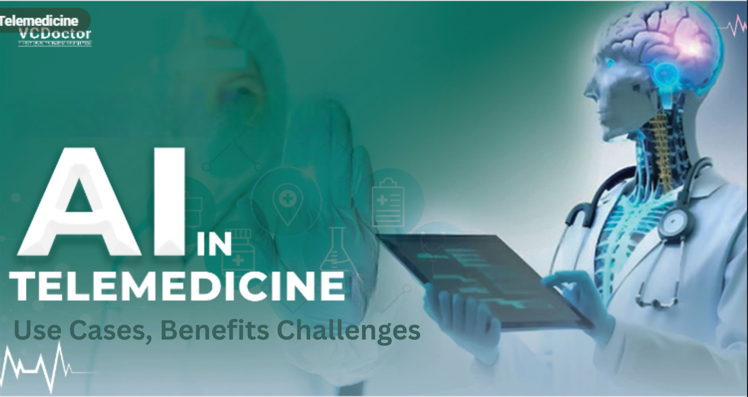Tips To Design Telehealth Applications For Senior Patients
- helpdeskvcdoctor
- Jul 4, 2024
- 4 min read

Are you willing to help senior patients by providing them with a telehealth platform? In the advanced medical industry, everyone is investing in telehealth platforms to enhance patients’ experiences. Somewhere, senior citizens or old people find it more attractive and efficient to use telehealth application for their medical care. Although it’s beneficial in severe situations when they are alone and need medical care but cannot visit the clinic, it’s not beneficial in severe situations when they are alone and need medical care but cannot visit the clinic.
So, let’s consider developing a telehealth application that can improve the lives of senior patients. In this blog, we will discuss the necessary tips for creating an app dedicated to senior patients and the benefits of telehealth for older adults. Additionally, check out how to reach out to the best mobile app development company to create a customized mobile application that engages senior patients in using telehealth services.
Necessary Tips Consider While Developing Telehealth Applications for Senior Patients
1. Simple and Intuitive Interface
Telehealth apps for seniors require a simple and clear interface. Investors must focus on using large, easy-to-read buttons that are clearly labeled. This helps seniors with vision or dexterity issues and reduces the number of steps needed to complete tasks. Keep processes straightforward and eliminate unnecessary clicks and pages.
It makes the app easier to navigate and less confusing. By focusing on clarity and simplicity, seniors can confidently use the app to access healthcare services. Overall, this approach improves their experience and provides the best telehealth for elderly people. Moreover, it will also make the app user-friendly. This is a key factor in helping seniors stay engaged with their health care.
2. Clear Instructions
While designing a geriatric telemedicine app, investors need to provide clear instructions to help them use the app effectively. Start by providing guided tutorials that offer step-by-step instructions or walkthroughs. These tutorials clearly explain how to perform common tasks and navigate the app. Additionally, use tooltips or pop-up hints to explain features.
These small, on-screen notes can provide immediate guidance and clarify any confusing elements. By incorporating guided tutorials and helpful tooltips, seniors can learn to use the app with confidence and ease. This approach ensures they understand how to access the app’s features and manage their healthcare needs, improving their overall experience and satisfaction with the telehealth application.
3. Readable Text
Designing a telemedicine for elderly users requires readable text to ensure they can easily access information. Start by using large fonts for better readability, which is crucial for seniors who may have vision issues. The text should be big enough to be read without straining.
Additionally, ensure that high contrast between the text and the background is integrated. It will help users distinguish between dark text and light text on a dark background. Investors can focus on clarity and simplicity. Seniors can easily use the app with clarity to access healthcare services. It improves their overall experience and ensures they can effectively use the telehealth application to manage their healthcare needs.
4. Accessible Design
Accessible design features such as screen readers and voice commands are essential to enabling interaction for users with disabilities. Voice commands make it possible to operate software or devices just by speaking, which improves usability and removes the need for physical input—especially for people with restricted mobility.
Therefore, telehealth access for seniors patients suffering from visually impaired people can help them navigate and access digital content thanks to screen readers, who translate text on screens into spoken words.
These characteristics are essential for guaranteeing inclusivity in technology, meeting a range of demands, and encouraging equitable access to data and communication resources. By implementing these functions, developers and designers contribute to a more user-friendly and accessible digital world where everyone may engage completely and efficiently.
5. Simple Login Process
A straightforward login process enhances user experience by implementing easy and secure authentication methods such as fingerprint or facial recognition. These methods not only simplify the login process but also bolster security by leveraging biometric data unique to each user.
Additionally, offering an option to stay logged in or remember credentials further streamlines access, reducing the need for frequent re-authentication without compromising security. This approach not only improves usability but also enhances user satisfaction. Moreover, by prioritizing simplicity and security in the login process, developers and designers contribute to a more user-friendly and efficient interface. Here, users can access their accounts conveniently and securely with minimal friction.
6. Reliable Technical Support
A stable technical support system is necessary to guarantee user happiness and quickly address problems. Providing customers with round-the-clock customer care ensures that help is accessible anytime they run into issues, building confidence and dependability in the offered solution. In addition to immediately resolving serious technical difficulties, this continuous availability also serves customers in different time zones or with varied schedules.
Additionally, telemedicine solutions for patients provide a variety of channels including chat, email, and phone improves accessibility and convenience by letting consumers select the mode of communication that best fits their needs or preferences. Whether calling for quick help, using chat to fix issues in real-time, or sending in-depth questions via email, users can anticipate prompt, efficient service that is catered to their specific needs.
7. Health Information Accessibility
Ensuring accessibility to health information involves providing easy access to medical records and history, enabling individuals to retrieve their health data effortlessly when needed. Organizing this information in a clear and understandable format further enhances accessibility, allowing patients and healthcare providers to navigate and interpret medical records effectively.
This approach not only improves patient empowerment and engagement but also supports informed decision-making and continuity of care. By prioritizing easy access and organized presentation of health information, healthcare systems and digital platforms contribute to better patient outcomes and healthcare delivery, promoting transparency and efficiency in managing personal health records.








Comments